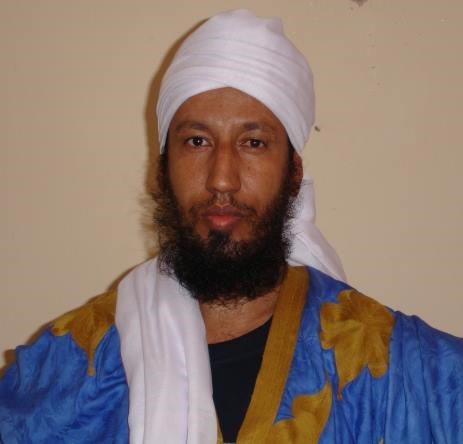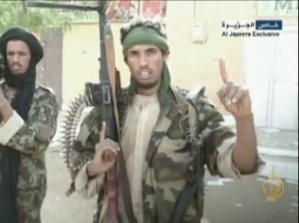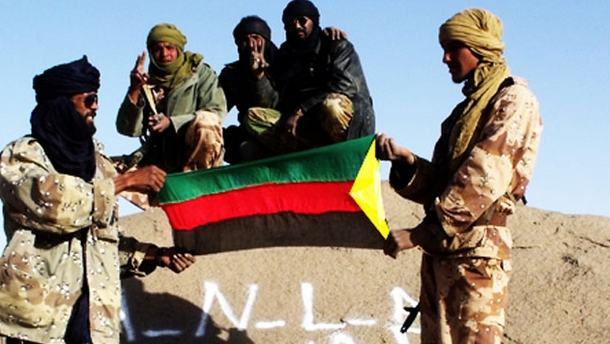Andrew McGregor
April 18, 2014
The growing perception in the Arab Middle East that Syria’s military has recently gained the upper hand in Syria’s civil war over an armed opposition that includes a number of politically dangerous extremist groups is leading to a number of new diplomatic initiatives aimed at resolving the Syrian crisis in a manner that will ensure security and stability for its neighbors. In Damascus there is a new confidence, with preparations underway for presidential elections in July and the war expected to finish by the end of the year. In the Hezbollah headquarters in southern Beirut, movement leaders are working on efforts to overcome the party’s politically-damaging military intervention in Syria by repositioning Hezbollah as Lebanon’s first line of defense against Syrian-based jihadists and terrorists. According to Hezbollah leader Sayyid Hassan Nasrallah, “The problem in Lebanon is not that Hezbollah went to Syria, but that we were late in doing so” (al-Jazeeera, March 29).
Intervention in Syria
Hezbollah entered the Syrian conflict in 2012 by sending small numbers of fighters to protect the Shrine of Sayida Zaynab (revered by Shiites) in south Damascus. The Hezbollah deployment escalated sharply in April 2013 as the movement played a major role in the battle for al-Qusayr (al-Jazeera, April 6).
Inside the Shrine of Sayida Zaynab, Damascus
Militarily, the movement has had a number of notable successes in Syria in recent weeks, ranging from the mid-March capture of the rebel stronghold at the strategically vital town of Yabroud, close to Lebanon’s Beka’a Valley, to the April 9 capture of the Syrian border town of Rankous, part of an effort to consolidate control of the Damascus to Homs highway. Both operations were conducted in cooperation with forces of the Syrian national army. These successes permit Hezbollah and the Lebanese Forces an opportunity to secure the Syrian-Lebanese border from further suicide bombings and other attacks by Sunni jihadists operating in Syria. Syrian opposition forces crossing the Lebanese/Syrian border are already restricted to using the most difficult mountain routes to cross the frontier (al-Sharq al-Awsat, April 11).
Hezbollah is currently cooperating with the Lebanese Army in a security crackdown in the Beka’a Valley, home to a significant number of Shiites (Daily Star [Beirut], April 11). The region has witnessed numerous retaliatory attacks by Syrian opposition forces on Hezbollah operatives since the Hezbollah intervention began. There have also been a number of incidents of sectarian violence in northern Lebanon (particularly the port city of Tripoli) that the Lebanese Army is working to eliminate. Lebanese security forces have also warned of a recent infiltration by al-Nusra Islamist fighters into the Palestinian refugee camps in Lebanon, where they are able to avoid ongoing security sweeps and plan bombings within Lebanon and Syria (Daily Star [Beirut], April 3).
Hezbollah deputy leader Shaykh Na’im Qasim says the recent battles in Syria have left the international community with a choice:
Either have an understanding with Assad to reach a result, or to keep the crisis open with President Assad having the upper hand in running the country… America is in a state of confusion. On the one hand it does not want the regime to stay and on the other it cannot control the militants which are represented by ISIS and al-Nusra. This is why the latest American position was to leave the situation in Syria in a state of attrition (Fars News Agency [Tehran], April 10).
Elsewhere, Qasim has noted that Assad retains the support of Syria’s religious minorities and suggests that political realities in the region must be addressed: “There is a practical Syrian reality that the West should deal with – not with its wishes and dreams, which proved to be false” (Fars News Agency [Tehran], April 12).
The Intervention and Hezbollah’s Domestic Standing
The former head of the opposition Syrian National Council, Dr. Burhan Ghalioun, predicts that Hezbollah will soon pull out of Syria due to heavy combat losses and growing dissent within the movement (al-Watan [Abha, Saudi Arabia], April 10). While possible, Ghalioun’s prediction runs counter to Hezbollah’s determination to preserve the Assad government for various reasons vital to the movement’s future success and overlooks Tehran’s importance in encouraging further Hezbollah operations in Syria. Nonetheless, Hezbollah has adapted its tactics to reduce battlefield losses by emphasizing reconnaissance and secure communications (AP, April 13).
Hezbollah leader Sayyid Hassan Nasrallah believes there is a growing recognition within Lebanon and even his own movement of the necessity for Hezbollah’s military intervention in Syria: “We do not face a problem with our people about our participation in Syria, on the contrary, there was a group that was hesitant, but it has settled its choice with us… I can say that some [anti-Assad] March 14 partisans support our involvement in Syria to protect Lebanon from terrorist takfiri groups” (Daily Star [Beirut], April 7).
Already strong in its military and social service divisions, Hezbollah is now seeking to expand its political influence in Lebanon beyond its representatives in parliament. Nonetheless, Hezbollah pulled out of Lebanon’s national dialogue in March after President Michel Sulayman criticized the movement’s involvement in Lebanon. Shaykh Na’im Qasim has stated that the movement will rejoin the talks only if four conditions are met:
- All parties must recognize that Israel is a threat to Lebanon
- No single group can monopolize power in Lebanon
- Political parties must resist linking the fate of Lebanon to the regional crisis
- Presidential and parliamentary elections must be held on schedule (Daily Star [Beirut], April 5).
Hezbollah has also emerged as a major player in the selection of a new Lebanese president. The candidate of the Christian Lebanese Forces Party (part of the anti-Syrian March 14 coalition), Dr. Samir Geagea, is a traditional opponent of Hezbollah and Syria (with the latter being behind his 11 years spent in solitary confinement in a windowless basement cell). However, Geagea is now seeking a more collaborative relationship with Hezbollah, which he insists should abandon its weapons and become a full-fledged political party. A former militia leader, Geagea does not agree with Hezbollah’s argument that it must retain its weapons so long as the Lebanese Army is incapable of defending the nation against Israeli incursions:
They are not the ones to make that decision. Lebanon will be an effective state that makes decisions or it will cease to exist. They cannot make decisions on our behalf. Hezbollah cannot assume that weapons are the best way to protect Lebanon… Talking about resistance is no longer convincing… If you take a look at the military’s weapons capabilities as it currently stands, the military is more than 50 times better armed than Hezbollah… The military’s Special Forces (the Marine Commandos, Mountain Commandos and Strike Force) outnumber Hezbollah’s Special Forces two to one or more. Hezbollah’s constituency will be the greatest beneficiaries of a stable, secure state that will allow the Lebanese economy to recover and create new opportunities for development projects (al-Sharq al-Awsat, April 9).
Hezbollah, however, is supporting the as yet undeclared candidacy of Free Patriotic Movement (FPM) leader and former Lebanese Army commander General Michel Aoun for president (the office is restricted to Christians under Lebanon’s national pact; Aoun is a Maronite Christian). The movement is expanding its political role in Lebanon by building alliances with the Shiite Amal movement and other elements of the pro-Syrian March 8 coalition (which includes both Hezbollah and the FPM). Sayyid Nasrallah insists his movement is seeking a “made-in-Lebanon” president, chosen without foreign interference (al-Akhbar [Beirut], April 8).
The Anti-Terrorist Agenda
A generally pro-Hezbollah Beirut daily’s description of the movement’s current security role provides some idea of how Hezbollah is positioning itself as Lebanon’s first line of defense against “takfiri” terrorists:
The Lebanese army cannot succeed in its current and future plans without at least moral support from Hezbollah. It would not be possible to eliminate terrorist and takfiri groups in Syria without the party. Security actors are aware of the important intelligence role played by the party in uncovering bombs and networks aiming to terrorise Lebanon and ignite strife. The party and its allies form a heavy political force, making it impossible to take any major national political decision against the party or without it (al-Akhbar [Beirut], April 11).
According to Sayyid Nasrallah, Hezbollah is not a substitute for the state, “even in the matter of resistance. When the state becomes capable and strong enough to defend Lebanon, we in the Resistance will go back to our schools and our universities and affairs” (as-Safir [Beirut], April 8). There are few signs, however, that anyone in the Hezbollah leadership believes that time is near. In the meantime, movement officials emphasize the movement’s success in closing a number of car-bomb factories threatening Lebanon during recent Hezbollah military operations in Syria’s Qalamun region, close to the Lebanese border.
The Shifting Diplomatic Landscape
There are indications that Iran and Saudi Arabia are beginning to develop contacts with the goal of eventual discussions on the Syrian issue (al-Akhbar [Beirut], April 9). Nasrallah has stated he supports reconciliation between the two nations (as-Safir [Beirut], April 8). Iran is reported to be proposing a ceasefire, the formation of a national unity government, gradual transfer of presidential powers to a national government and finally presidential and parliamentary elections (al-Akhbar [Beirut], March 31). There is little doubt that Hezbollah would welcome any steps towards finding a Syrian solution; the movement’s participation in the conflict has come at an enormous human and financial cost to Hezbollah’s Lebanese constituency.
While the movement’s leadership maintains support for their role in Syria is actually increasing, it is also clear that Hezbollah’s commitment in Syria cannot be open-ended. While Nasrallah sees a turn-around in the fortunes of the Assad regime, he is also aware the conflict is entering a dangerous phase for his movement if no settlement is in sight: “In my opinion, the phase of bringing down the regime or bringing down the state is over… [The armed opposition] cannot overthrow the regime, but they can wage a war of attrition” (as-Safir [Beirut], April 7).
Hezbollah’s relations with Egypt also appear to be thawing after a complete breakdown during the rule of former Egyptian president Muhamad Mursi. With the discredited Muslim Brotherhood out of the way, Egyptian Foreign Minister Nabil Fahmy met with Hezbollah MP and Industry Minister Hussein al-Hajj Hassan on March 20. Hassan is said to have explained Hezbollah’s intervention in Syria as a response to the dangers posed by cross-border terrorism (al-Akhbar, March 31). While the groundbreaking meeting was far from an Egyptian endorsement of the movement, it did represent an important, if tentative, step towards improving relations and developing a more cooperative policy on the Syrian issue (Egypt opposes Hezbollah’s military intervention). With Egypt working closely with Saudi Arabia, its main financial backer during the political transition, and Hezbollah working closely with the Iranian regime, further talks could be the beginning of a gradual reduction in the dangerous tension between the often overlapping Shiite and Sunni spheres of the Middle East.
The Anti-Israeli Resistance
Hezbollah is aware that its military commitment in Syria could be interpreted as an opportunity by the Israeli military and has therefore remained active along the border with Israel to demonstrate it can still mount operations against Israel while supporting the Assad regime within Syria. Israeli strikes such as the air attack on two Hezbollah trucks carrying missiles in late February are politically useful to the movement, which characterizes such strikes as attacks on the Lebanese nation that confirm Israel’s “aggressive nature” (Daily Star [Beirut], February 27).
A Hezbollah attack on an Israeli unit in the disputed Shaba’a Farms region on the border was carried out on March 14 in response to an Israeli Air Force raid a week earlier (Jerusalem Post, April 11). Nasrallah said the attack “sent a message that the Resistance is still capable of fighting Israel” and added that the operation was “about deterrence” (as-Safir [Beirut], April 8).
Financial Distress?
There are signs that Hezbollah is undergoing financial stress at the moment due to several factors, most notably cuts in funding due to Iranian austerity measures. While the movement continues to receive financial assistance from the independent budget of Supreme Guide Ayatollah Khamenei, funding from the Iranian Foreign Ministry is reported to have stopped five months ago (al-Sharq al-Awsat, April 9).
A bipartisan bill before the U.S. House of Representatives, the Hezbollah International Financing Prevention Act (H.R. 4411), is designed to “cripple” Hezbollah and eliminate its threat to Israel by extending new financial sanctions, penalizing satellite providers carrying Hezbollah’s al-Manar TV and dual designations as a narcotics trafficking organization and transnational criminal organization (Daily Star [Beirut], April 6). [1] Economic investments and an expanding commercial element are important sources of revenue for Hezbollah that may be threatened to some extent by the proposed U.S. legislation.
Hezbollah’s deployment in Syria is also a financial drain on the movement. While Iran covers the costs of the actual military deployment, the costs of responding to associated attacks by Sunni militants within Lebanon are borne by the movement, which also provides $50,000 in cash to the families of each Hezbollah member killed in Syria, as well as housing for those families who need it. The result has been cutbacks in various Hezbollah programs, especially allocations to media groups belonging to allied Sunni and Christian currents (al-Sharq al-Awsat, April 9).
Donations from the Lebanese Shi’a diaspora are another important source of funding, but this source is also under duress. On April 8, German authorities banned what they described as a Hezbollah front organization that had raised $4.5 million in Germany since 2007. The ban was accompanied by a series of raids as Interior Minister Thomas de Maziere explained: “Organizations that directly or indirectly from German soil oppose the state of Israel’s right to exist may not seek freedom of association protection” (Daily Star [Beirut], April 9).
Conclusion
Hezbollah is confident it can regain the respect and influence it had in the region after it repulsed the Israeli military in 2006 by positioning itself as not only an anti-Israel resistance movement but also a shield against (Sunni) jihadist groups preparing cross-border terrorist attacks in Lebanon. Overlooked in Hezbollah statements is the fact that it is Hezbollah’s intervention in Syria that attracts many (though by no means all) of these attacks. Though the movement is undergoing great stress from its military campaign in Syria and Western efforts to interrupt its funding, the movement has demonstrated great resilience in the past and is likely to support diplomatic efforts to end the costly conflict in Syria. Resolution in this sphere promises to bring greater regional acceptance for the movement and will enable it to continue its move from Lebanon’s political periphery to its political center in Beirut.
Note
1. See Rep. Mark Meadows, “Cut Off Hezbollah’s Lifeline to International Financing,” Washington Examiner, April 10, 2014, http://washingtonexaminer.com/cut-off-hezbollahs-lifeline-to-international-financing/article/2547025; Rep. Paul Cook, “Rep. Paul Cook Cosponsors Bills to Sanction Hezbollah, Block Terrorist from Entering the United States,” Press Release, April 9, 2014, http://cook.house.gov/media-center/press-releases/rep-paul-cook-cosponsors-bills-to-sanction-hezbollah-block-terrorist
This article first appeared in the April 18, 2014 issue of the Jamestown Foundation’s Terrorism Monitor.



